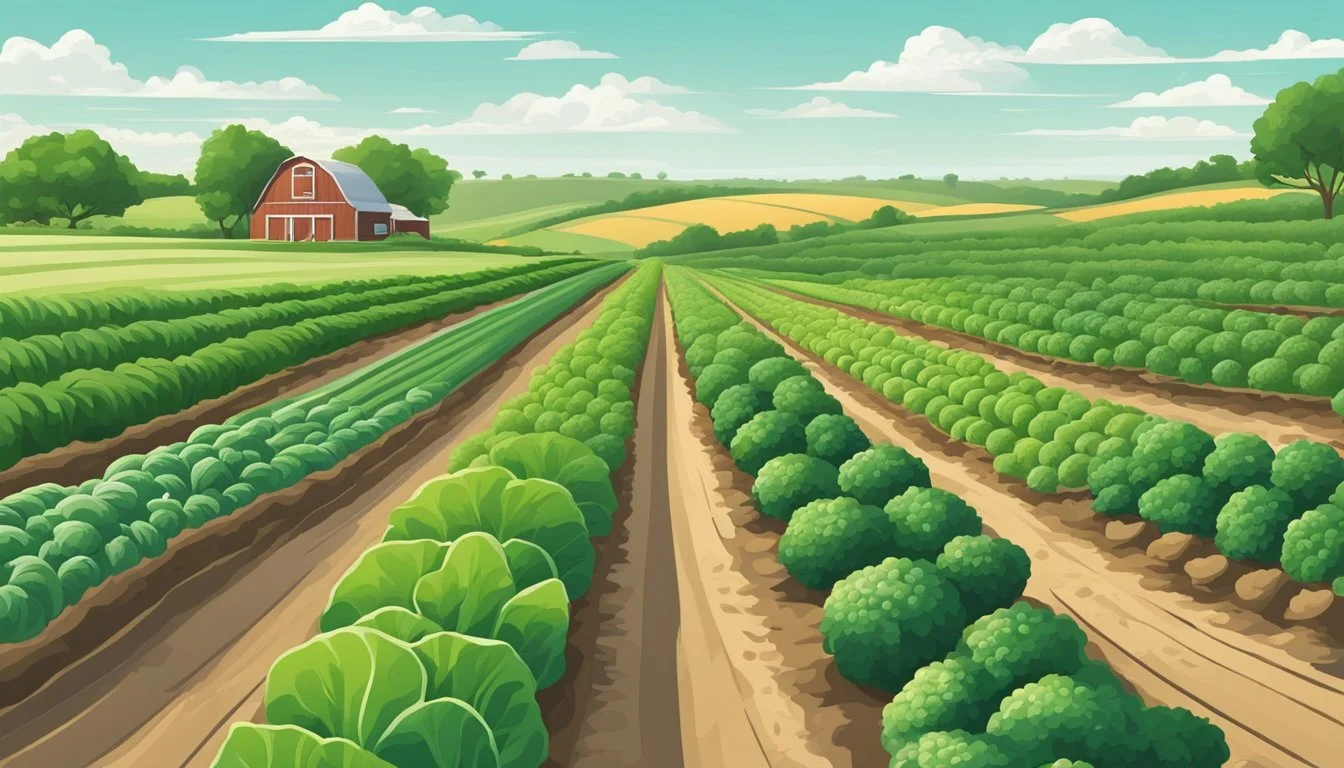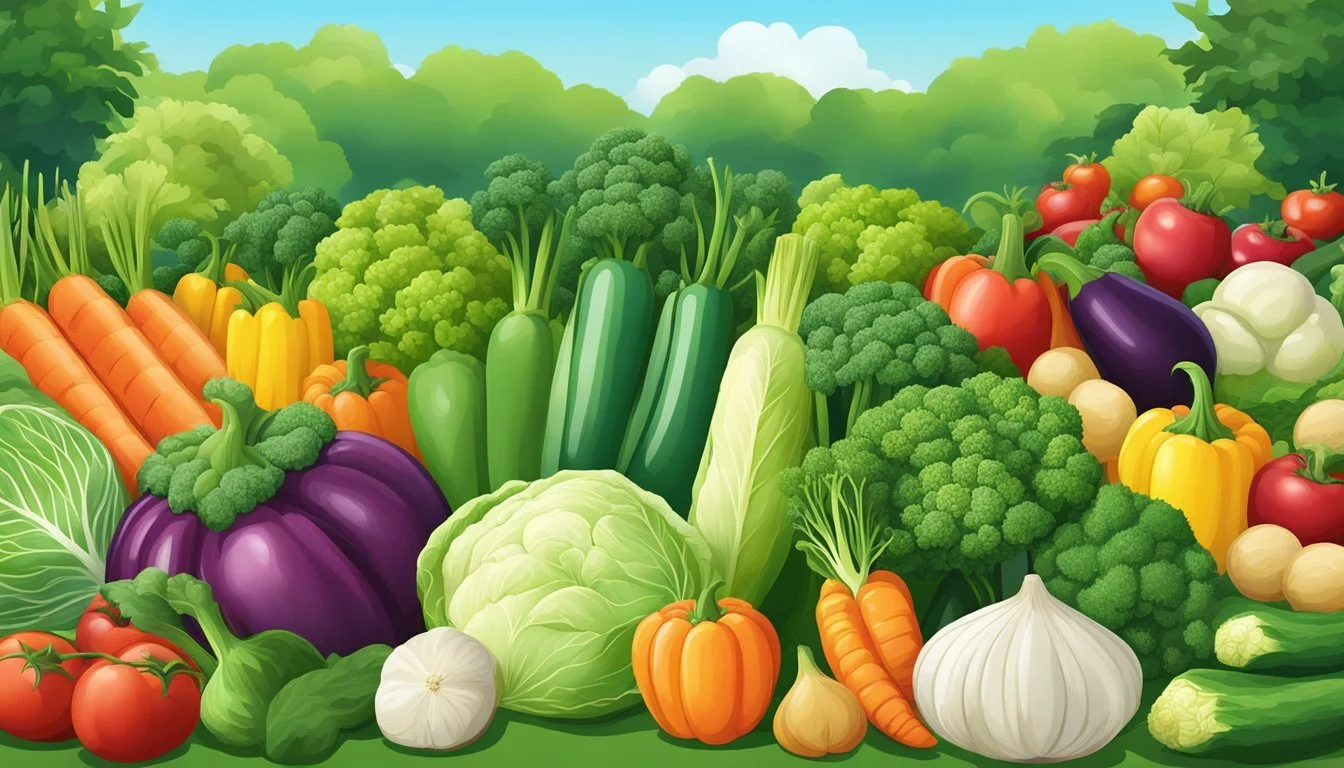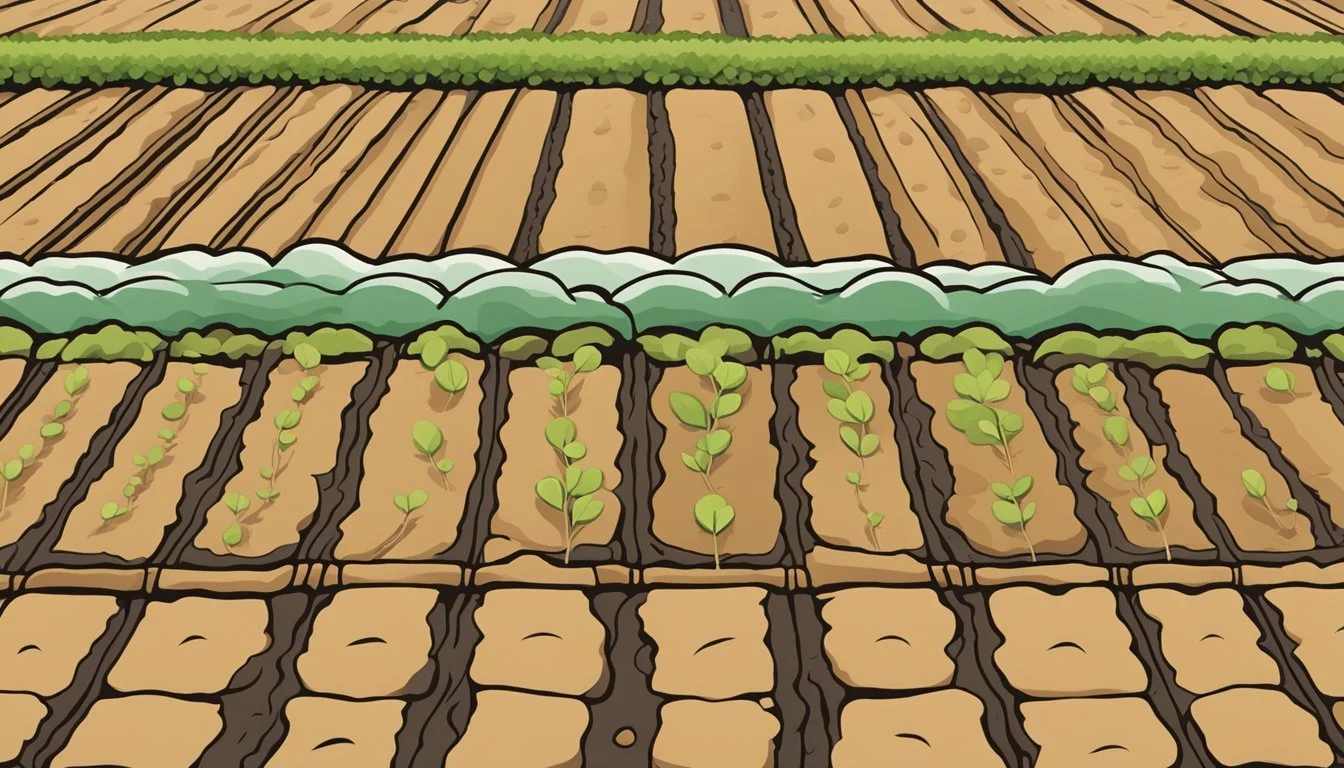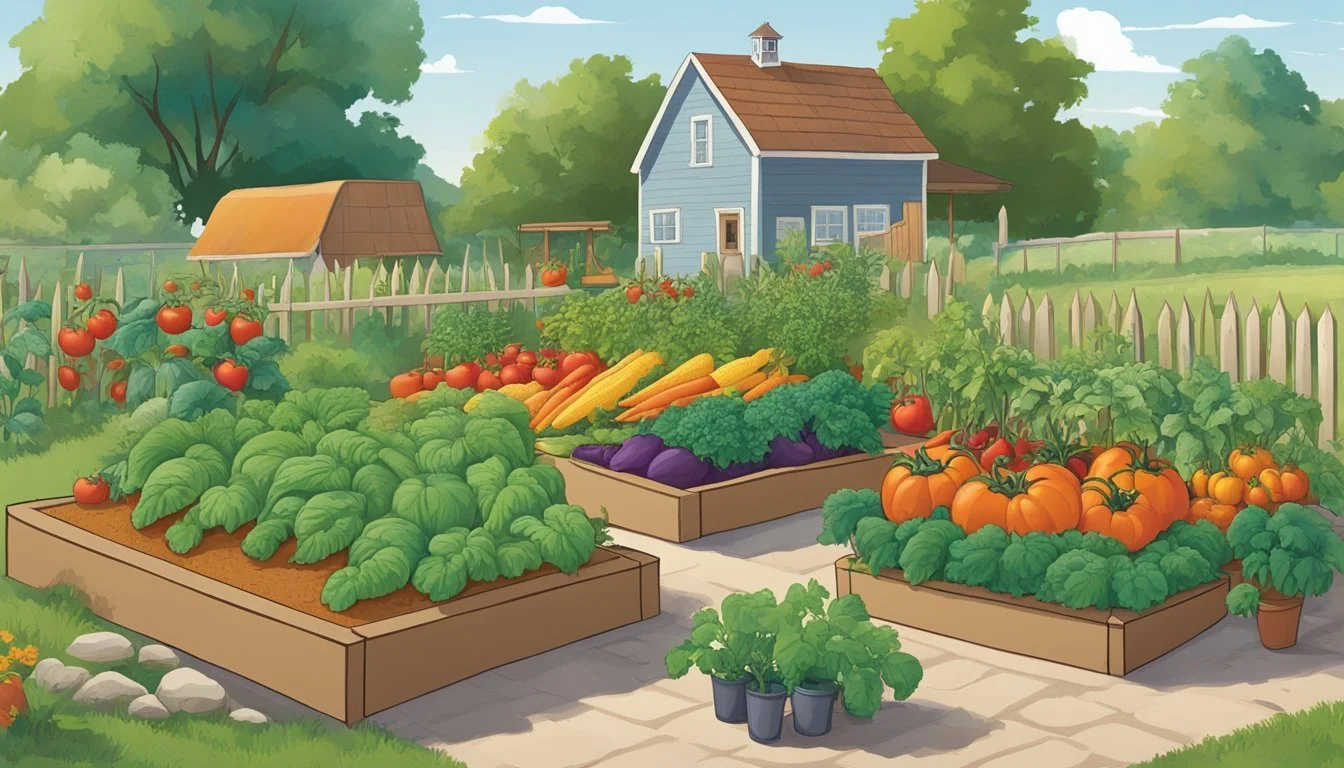Vegetable Gardening in Kansas
A Guide to Growing Success
This Article is Part of Our Guide on Vegetable Gardening by State
Vegetable gardening in Kansas presents a unique opportunity for gardeners to cultivate a variety of plants that thrive in the state's climate. Kansas lies within a region where temperature shifts between the seasons can be abrupt, requiring gardeners to be mindful of the best planting times and strategies for their crops. The state's cold springs and cooler fall months are particularly favorable for growing hardy vegetables such as lettuce, which can even tolerate frost and snow. This characteristic makes it an excellent choice for those starting their garden as it’s a low-maintenance plant that provides quick rewards.
Planning a Kansas garden necessitates understanding the local hardiness zones, which dictate the types of vegetables that can withstand the regional weather. A good Kansas garden guide will emphasize the importance of seasonality and selecting vegetables that are well-suited to the temperature fluctuations of the area. For the Kansas gardener, the key to a successful harvest lies in this planning phase, combined with consistent care and maintenance throughout the growing season.
Gardening in Kansas can be a source of both sustenance and enjoyment. It encompasses the selection of appropriate vegetable varieties and extends to the nurturing of plants through the changing seasons. With the right tools, knowledge, and a bit of patience, gardeners can create and tend to a thriving vegetable garden that yields fresh and nutritious produce, contributing to their household and community.
Kansas Climate and Hardiness Zones
Gardeners in Kansas should be well-informed about the specific hardiness zones and climate conditions to ensure successful vegetable gardening. The state's range across zones and its weather patterns critically inform planting decisions.
Understanding Hardiness Zones
Kansas spans USDA hardiness zones 5 through 6. This classification is based on the average annual minimum winter temperature. Zone 5 has temperatures that can descend as low as -20°F, while Zone 6 experiences minimum temperatures down to -10°F. These zones help gardeners determine which plants are most likely to thrive in their specific region.
Managing Extreme Weather
Kansas is known for its extreme weather patterns, including hot summers and potential for drought. Gardeners must plan for irrigation during dry spells and select drought-tolerant plants. In summer, high temperatures can stress plants, so choosing heat-resistant varieties and providing adequate water is crucial.
Optimal Planting Seasons
To take advantage of Kansas' climate, gardeners should consider fall and spring as optimal planting seasons. Fall allows for cool-weather crops to establish before the winter freeze, while spring planting aligns with warming soil temperatures and increasing daylight, ideal for most vegetables. Gardeners must also pay attention to the last frost dates in spring and the first frost dates in fall to protect their crops accordingly.
Soil Preparation and Management
Effective soil management is crucial for a successful vegetable garden in Kansas. Gardeners should ensure a well-drained soil structure, proper nutrient balance, and weed control for optimal plant growth and yield.
Soil Testing and Amendment
Before planting, a soil test is recommended to assess nutrient levels and pH. Based on the results, gardeners can amend their soil to correct any deficiencies. Adding compost helps improve soil structure and fertility. Key nutrients like nitrogen, phosphorus, and potassium should be balanced according to specific crop needs. Lime may be added to increase the pH, or sulfur to decrease it, ensuring plants can effectively absorb nutrients.
Mulching and Weed Control
Mulching your garden bed is a dual-purpose tactic. It suppresses weeds and helps maintain moisture levels in the soil. Organic mulches, such as straw or wood chips, also add nutrients as they decompose. For weed control, it's effective to apply mulch after planting and to keep it a few inches away from plant stems to prevent rot.
Raised Bed and Container Options
Raised garden beds aid in preventing soil compaction, providing good drainage and can be easier on gardeners' backs. Fill them with a mixture of soil and compost for a nutrient-rich environment. Container gardening is a flexible option for those with limited space or poor soil. Containers should have drainage holes and be filled with a quality potting mix, not garden soil, to prevent compaction and ensure proper root development.
Garden Planning and Design
A successful Kansas garden begins with meticulous planning and design, focusing on the unique horticultural environment of the region. These considerations set the foundation for a productive and rewarding vegetable garden.
Layout and Spacing Considerations
In designing a garden, one must give careful thought to the layout and spacing to ensure each vegetable has enough room to thrive. Row spacing is crucial for accessibility and air circulation, which minimizes disease risk. For instance, standard row spacing for Kansas gardens is typically 18 to 36 inches. It's also essential to consider the direction of plant rows; North-South orientation is often recommended to maximize sunlight exposure.
Common Kansas vegetables like tomatoes require more space, with recommendations for spacing plants at least 2 feet apart within the row. Use a garden map to plan and allocate space efficiently – this benefits plant growth and simplifies the maintenance process.
Choosing Vegetables for Kansas
When selecting vegetables for a Kansas garden, it's important to choose those that adapt well to the climate. Kansas is suitable for a variety of vegetables including:
Cool season: Lettuce, spinach, radishes
Warm season: Tomatoes, peppers, cucumbers
Some vegetables, like lettuce, are cold hardy and can even survive light frosts, making them an excellent choice for early spring and fall gardens. For a successive harvest, stagger planting times and choose varieties with different maturity dates.
Incorporating Vertical and Urban Gardening
Vertical gardening is an innovative technique that allows gardeners to maximize limited space and can be particularly useful in urban gardening settings. Structures like trellises and vertical planters help utilize vertical space, especially for vegetables like cucumbers and pole beans, which naturally climb.
In urban environments where ground space may be scarce, container gardening serves as a versatile alternative, making it possible to grow vegetables like tomatoes and peppers on balconies or patios. This approach not only conserves space but can also bring gardens to places previously deemed unsuitable for traditional gardening.
Planting Techniques
Successful vegetable gardening in Kansas hinges on mastering seed starting indoors and sowing seeds (how long do seeds last?) directly in the garden. These fundamental skills ensure a robust garden from the earliest plantings to the final harvest.
Seed Starting Indoors and Transplanting
When growing vegetables in Kansas, gardeners can start seeds indoors to get a head start on the season. Adequate light and consistent moisture are crucial for seed germination. A standard practice is to fill seed trays or pots with a sterile seed-starting mix. Seeds should be sown at a depth approximately twice their diameter. After germination, seedlings need proper care, which includes sufficient light and water. Once they have developed their true leaves and the weather has stabilized, they can be hardened off—gradually acclimated to outdoor conditions—over 7-10 days. Transplanting should occur when the soil is workable and the threat of frost has passed.
Key Steps for Seed Starting Indoors:
Sow seeds in trays with seed-starting mix.
Provide consistent light and moisture until germination.
Transplant after hardening off seedlings.
Direct Sowing in the Garden
Direct sowing seeds in the garden is preferred for vegetables that do not transplant well. Warm soil and weather conditions are vital for this method. Carrots, beans, and peas are ideal for direct sowing in Kansas gardens due to their hardy nature. Plant seeds at the recommended depth and distance according to the packet instructions to allow adequate space for maturation. Water the seeds gently but thoroughly after planting to encourage strong root development. Thinning the seedlings once they've sprouted ensures that plants have enough room to grow.
Best Practices for Direct Sowing:
Wait until the soil is warm enough for the specific crop.
Plant seeds at the correct depth and spacing.
Water carefully after planting to establish the seeds.
Thin seedlings to prevent overcrowding.
Irrigation and Water Management
In the climate of Kansas, effective irrigation and water management are crucial for a successful vegetable garden. Gardeners must balance their water use carefully, especially considering the frequent periods of drought in the region.
Watering Best Practices
Frequency and Timing: Vegetable gardens in Kansas should be watered deeply and infrequently to encourage deep root growth. Early morning watering is ideal as it allows foliage to dry before evening, reducing the risk of disease. During hot and dry spells, gardens might require water more frequently.
Mulching: Applying a layer of organic mulch around vegetables helps retain soil moisture, suppresses weeds, and regulates soil temperature. Mulch should be kept a few inches away from the base of plants to prevent rot and disease.
Windbreaks and Shade: Protection from wind and excessive sun can reduce water evaporation. Gardeners can use fences, shrubs, or buildings to provide barriers against the elements.
Drip Irrigation and Water Conservation
Drip Irrigation Systems: A drip irrigation system is highly recommended for conserving water while ensuring vegetables receive enough moisture at the root zone. This system slowly delivers water directly to the soil, which minimizes evaporation and runoff.
Efficiency: It is important to regularly check irrigation systems for leaks and ensure they are delivering the right amount of water. Efficient water use is not just beneficial for the garden but is also a responsible practice in areas like Kansas where water resources can be scarce.
Adjustments: Irrigation schedules should be adjusted according to rainfall, temperatures, and the lifecycle stages of the crops. Young seedlings may need frequent, lighter watering, while established plants benefit from less frequent but deeper irrigation.
Pest, Disease, and Wildlife Management
Gardeners in Kansas can encounter a variety of challenges including pests, plant diseases, and wildlife intruders. Effectively managing these issues requires specific strategies to protect vegetable gardens and ensure productive harvests.
Common Pests and Organic Control
Kansas gardens often face threats from insects such as aphids, fruit worms, and mites. Organic control methods emphasize the use of natural remedies and beneficial insects. For example, introducing ladybugs can help to naturally reduce aphid populations, as they are natural predators. Handpicking larger pests like fruit worms and applying neem oil for mites are also effective organic approaches. Regular monitoring and timely interventions can prevent pests from causing significant damage.
Plant Diseases and Prevention
Plant diseases, such as blight, can disrupt vegetable growth significantly. To prevent the spread of disease, gardeners should practice crop rotation and avoid overhead watering, which can promote the development of fungal diseases. They should also remove and compost infected plants to prevent recurrence. The use of resistant plant varieties and natural fungicides like copper sprays can also be effective in managing blight and other diseases. Maintaining a balanced soil ecosystem and good air circulation among plants is critical.
Dealing with Animal Intruders
Wildlife such as deer, rabbits, and squirrels can pose a challenge to vegetable gardens. Physical barriers like fencing can be very effective in keeping these animals out. For deer, a fence needs to be high enough—at least 8 feet—to prevent them from jumping over. For smaller animals like rabbits and squirrels, installing wire mesh or using netting can deter access. Companion planting and the presence of a dog or other domestic animals can also serve as a deterrent to wildlife. It is essential to secure the garden perimeter to reduce crop loss due to these intruders.
Vegetable Care and Maintenance
Effective vegetable care and maintenance are critical for producing a bountiful harvest in Kansas. This includes proper feeding and fertilizing, pruning and training for optimal growth, and vigilantly monitoring plant health.
Feeding and Fertilizing
Vegetables: Most vegetables in Kansas, including tomatoes, lettuce, and squash, benefit greatly from timely feeding. A balanced fertilizer with equal parts nitrogen, phosphorus, and potassium is suitable at the beginning of the growing season.
Nitrogen is crucial for leafy vegetables like kale and lettuce, promoting robust foliage.
Phosphorus and potassium are vital for root and fruit development, essential for carrots, radishes, and tomatoes.
Remember to follow the recommended application rates for each vegetable to prevent over-fertilization which can lead to excessive foliage with poor fruit production.
Pruning and Training
Tomatoes and Peppers: Pruning is essential for tomatoes and peppers to ensure adequate airflow and sunlight penetration. Remove suckers and non-productive branches to direct energy towards fruit-bearing branches.
Cucumbers and Squash: These vine-growing vegetables need training to optimize space and expose the fruits to sunlight, enhancing flavor and health. Using trellises or supports keeps them off the ground, reducing the risk of disease.
Monitoring for Health and Growth
Regular monitoring is key to identifying and addressing issues early on. Look for signs of nutrient deficiencies, pests, and diseases.
Pest Control: Check leaves for holes and yellowing which can signal an infestation. Implement natural or recommended controls as necessary.
Disease Prevention: Discoloration or stunted growth could indicate disease. Apply appropriate fungicides or bactericides, and remove affected parts promptly to prevent spread.
Health monitoring also involves ensuring vegetables like beans and peas have adequate support to grow vertically and that root vegetables like carrots and radishes have sufficient soil depth. Assess the overall health of plants by checking for vibrant color and robust growth, which typically indicates a well-maintained vegetable garden.
Harvesting and Post-Harvest Management
Harvesting vegetables at the right time ensures optimal flavor, health benefits, and longevity of produce. Proper post-harvest management also plays a crucial role in maintaining the quality of vegetables after they have been picked.
When and How to Harvest
Vegetables should be harvested when they are at their peak maturity to capture the best flavor and nutritional value. For example:
Tomatoes are ready when they are uniformly colored and slightly soft to the touch.
Lettuce can be harvested when the leaves are firm and crisp.
Carrots should be pulled when they reach the desired size and the color is deep.
The technique of harvesting varies with each vegetable. Tools should be clean and sharp to avoid damaging the plants or vegetables. Here are some methods:
Use secateurs or a sharp knife for cutting vegetables with stems.
Gently twist or hand-pull root vegetables like carrots or radishes.
Storing Vegetables for Longevity
Storing vegetables correctly after harvesting extends their shelf life and preserves their quality. Each vegetable has its own storage needs, often defined by temperature and humidity. Consider the following:
Cool storage: Vegetables like carrots and leafy greens last longer when stored in a refrigerator at high humidity.
Dry storage: Onions and garlic should be stored in a cool, dry place with adequate ventilation.
To maintain health benefits and flavor, avoid washing vegetables until right before use, as excess moisture can lead to decay. Use breathable containers or bags to prevent the accumulation of ethylene gas, which can hasten ripening and spoilage.
Community and Educational Resources
In Kansas, gardeners seeking knowledge and skills to create a successful garden have access to a variety of community and educational resources. These resources provide valuable support to both novice and experienced Kansas gardeners.
Local Extension Services and Master Programs
The K-State Research and Extension is a pivotal resource for home gardeners in Kansas. It offers an extensive range of services, including site assessment and planning for community and school gardens. Their Master Gardener programs are tailored to equip participants with expert gardening knowledge and volunteer leadership skills. Residents of cities such as Wichita can contact local extension agents for targeted advice to cater to the specific needs of their home garden.
Gardening Workshops and Demonstration Gardens
Kansas gardeners can enhance their skills by attending various gardening workshops. These workshops cover practical topics from vegetable gardening basics to advanced horticultural techniques. Additionally, a number of demonstration gardens found across the state offer real-life examples of effective garden practices in the Kansas climate. Interested individuals can view these gardens to learn and draw inspiration for their own garden projects.








